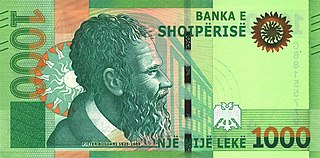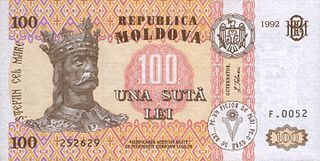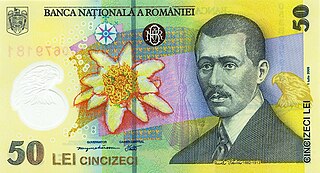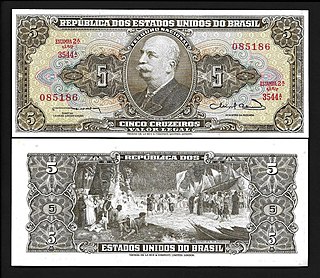
The lek is the currency of Albania. Historically, it was subdivided into 100 qintars.

The Macanese pataca or Macau pataca is the currency of the Macao Special Administrative Region of the People's Republic of China. It is subdivided into 100 avos, with 10 avos called ho (毫) in Cantonese.

The Sri Lankan Rupee is the currency of Sri Lanka. It is subdivided into 100 cents, but cents are rarely seen in circulation due to its low value. It is issued by the Central Bank of Sri Lanka. The abbreviation Re (singular) and Rs (plural) is generally used, the World Bank suggests SL Rs as a fully disambiguating abbreviation for distinction from other currencies named "rupee".

The Pakistani rupee is the official currency in the Islamic Republic of Pakistan. The issuance of the currency is controlled by the State Bank of Pakistan. It was officially adopted by the Government of Pakistan in 1949. Earlier the coins and notes were issued and controlled by the Reserve Bank of India until 1949, when it was handed over to the Government and State Bank of Pakistan, by the Government and Reserve Bank of India.

The leu is the currency of Moldova. Like the Romanian leu, the Moldovan leu is subdivided into 100 bani. The name of the currency originates from a Romanian word which means "lion".

The Romanian leu is the currency of Romania. It is subdivided into 100 bani, a word that means both "money" and "coin" in the Romanian language.
Since 1867 there have been four successive currencies in Romania known as the leu. This article details the banknotes denominated in the leu and its subdivision the ban since 1917, with images.

The ten lei banknote is one of the circulating denominations of the Romanian leu. It is the same size as the 20 Euro banknote.

The current one leu banknote is the smallest circulating denomination of the Romanian leu. It is the same size as the 5 Euro banknote.

The fifty-lei banknote is one of the circulating denomination of the Romanian leu. It is the same size as the 50 Euro banknote.

The one hundred lei banknote is one of the circulating denomination of the Romanian leu. It is the same size as the 2002 series 100 Euro banknote.

The two hundred lei banknote is one of the circulating denomination of the Romanian leu.

The five hundred lei banknote is the highest of the circulating denomination of the Romanian leu. It is the same size as the 200 Euro banknote.
The Romanian one-ban coin is a unit of currency equalling one one-hundredth of a Romanian leu. It is the lowest-denomination coin of the present currency and has been minted every year since the leu was redenominated in 2005. As well as Romania, the coin has been minted in the United Kingdom (1867), Germany (1900) and Russia (1952).
The five bani coin is a coin of the Romanian leu. It is the second-lowest denomination of the present circulating coins, introduced to circulation on 1 July 2005.
The fifty-bani coin is a coin of the Romanian leu. The fifty-bani is also the only coin of Romania to not be steel-based, but be made completely of an alloy, and was also the first coin in the country to have a written inscription on its edge, with the introduction of 4 new coins in 2019.

The one hundred thousand lei was the largest-denomination coin ever issued in Romania. It was minted only in 1946, to mark the end of World War II the previous year.
The one leu coin was a coin of the Romanian leu. Introduced in 1870, it last circulated between 1992 and de facto 1996, when it was the lowest-denomination coin in the country. It was considered as circulating coin for accounting reasons and was still minted in proof sets until the 2005 denomination of the currency.
The Coins of the Romanian leu have been issued since the introduction of the Romanian leu in 1867.

The (first) cruzeiro was the official currency of Brazil from 1942 to 1967. It replaced the old real, which had been in use since colonial times, at the rate of Rs 1$000 = Cr$1, It was in turn replaced by the cruzeiro novo, at the rate of Cr$1,000 = NCr$1.


















